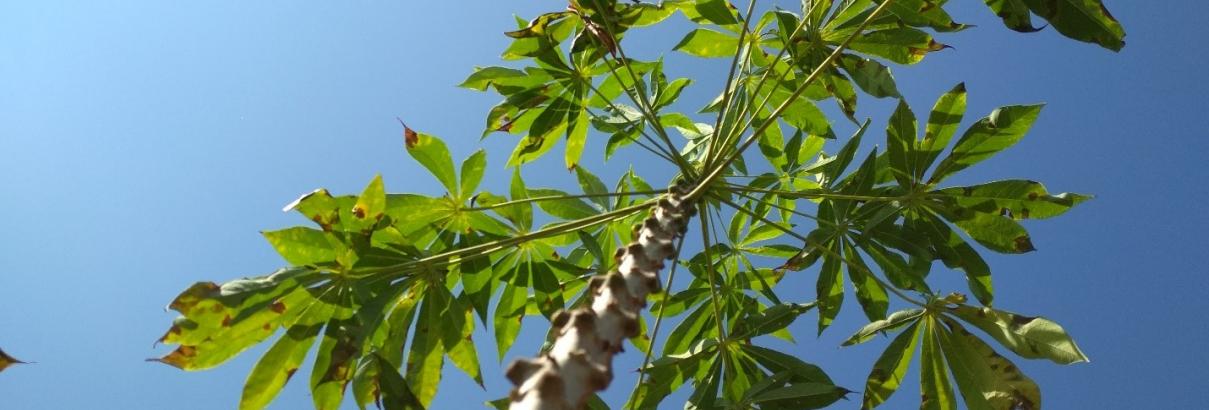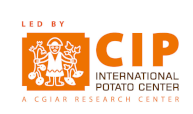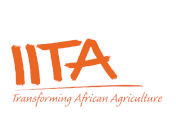Why are crop wild relatives are important?
Crop wild relatives (CWR) are any wild plant taxa that can contribute to an indirect use to a crop owing to their relatively close genetic relationship (Maxted et al., 2006 1 ). CWR therefore typically provide potential untapped genetic diversity for beneficial agronomic and nutritional traits such resistance to pest and disease, tolerance to high levels of salinity or extreme drought (Warschefsky et al., 2014 2 ). CWR usually grow in farms, forests, on road edges and other natural or semi-natural habitats, where they are exposed to the constantly evolving climate conditions, thus allowing them to develop better adaptive traits to cope with the environmental changes (e.g., Kell et al., 2012 3 ). However, just as other wild plant species, the habitats of CWR and their genetic diversity are constantly threatened at varying degrees by several major drivers including changing land use, climate change, unsustainable agricultural practices, over-exploitation, and invasive species, and therefore they often need urgent and active conservation actions to ensure their survival and use in the future (Engels & Thormann, 2020; Ford-Lloyd et al., 2011 4 ).
Establishment of in situ genetic reserve
Conservation of crop wild relatives can either be done in situ (i.e., in their habitats where they occur naturally managed as genetic reserves and where they may evolve with the changing environmental cues) or ex situ (as seed samples in gene banks or in tissue culture or cryopreserved, or as mature individuals in field collections). For effective and long-term in situ conservation of these wild plant taxa, it is recommended to establish genetic reserves ideally within existing protected areas, as it is easier to make alterations to their management plans to accommodate the genetic conservation of CWR species and the costs can be relatively easy to budget within their existing frameworks, avoiding unnecessary cost of creating new conservation sites (Iriondo et al., 20085 ). Besides offering legal protection, such genetic reserves are useful for both managing the existing wild taxa populations, and allows for their long-term monitoring to detect eventual changes in their population demographics and environment (Maxted & Kell, 20096 ).
Conservation planning - as a strategy for in situ conservation
Conservation planning is a series of steps which can be applied for systematic identification of the best representation of CWR diversity at different levels – be it taxonomic (e.g., all wild relatives of a specific family or genus) or geographic (national, regional, or global). This would allow for the integration of these wild plants’ diversity to an in situ network of genetic reserves, which can be further complemented with an equally genetically representative ex situ collections sampled from genebanks.
The different steps include the following and are further detailed in Maxted et al., 2010 and Magos Brehm et al., 20197 .
- Creating the CWR inventory which is essentially a detailed list of all the species occurring under a certain geographic range (country, region, continent) or taxonomic group (family, genus).
- Prioritizing the CWR taxa/diversity based on a set of selection criteria, for example threat status, socio-economic value of the associated crop, known utilization potential in pre-breeding.
- Ecogeographic and genetic diversity analysis of priority CWR to identify the geographic hotspots that would enable active conservation of the the highest diversity of priority CWR.
- Identification of threats to priority CWR taxa and demarcate important CWR areas.
- CWR gap analysis would enable identification of wild plant taxa that occur outside protected areas and require active protection and/or need to be collected in genebanks. An example of this approach was used on wild relatives of banana (Musa spp.), you may read more about the work here.
All these steps will eventually be helpful in the development of in situ conservation strategies, which may be complemented with ex situ measures as well.
Monitoring of crop wild relatives population
CWR populations often occur in dynamic habitats where the physical and environmental conditions are continuously changing. Therefore, these populations need regular and systematic monitoring to evaluate any short, medium, and long-term changes which may contribute to demographic loss, genetic erosion, hybridization or even species extinction (de Carvalho et al., 2016 8 ; Iriondo et al., 2008 5 ; Iriondo et al., 2021 9 ) to ensure that they continue to survive and propagate. The monitoring of CWR populations and the habitats in which they occur may serve different purposes, which include detection of any physical or biotic changes in the natural habitat of the target CWR populations that may impact the population size and structure or the population genetic diversity. Regular monitoring also enables conservation managers to determine the cost effectiveness of management actions on populations and thus better guide management decisions (Iriondo et al., 2008 5 ; Iriondo et al., 2021 9 ).
Management guidelines for in situ genetic reserves
Once the genetic reserves are established, site managers must ensure that the quality of the wild populations remain of high standards and are made available to diverse users and this could be achieved by following specified management guidelines. Some main considerations are provided below, you may find more detailed materials to read in on the Further reading section.
A management plan should be a dynamic document that need to be reviewed constantly depending on resources and funding available (Iriondo et al., 2021 9 ), but should mainly cater for the following:
- Site description of the genetic reserve
- Target taxon / taxa description of the genetic reserve i.e., what species occur within the genetic reserve
- Habitat characterization of the site, detailing its physical and biotic components
- Management objectives of the genetic reserve
- Detailed description of what conservation actions will be undertaken and what methods will be used.
- Detailed work plan, including funding, labour, and time frame for execution of the tasks
- Monitoring and evaluation plan – detailed description of method, frequency, and indicators to be used for monitoring of the CWR population(s) and progress made.
Further reading
- Alercia, A., López, F., Marsella, M., and Cerutti, A.L. 2021. Descriptors for Crop Wild Relatives conserved in situ (CWRI v.1). International Treaty on Plant Genetic Resources for Food and Agriculture. Rome. FAO. http://www.cropwildrelatives.org/fileadmin/bioversity/publications/2021_Alercia_et_al_CWR_in_situ_descriptors.pdf
- Magos Brehm J, Kell S, Thormann I, Gaisberger H, Dulloo E and Maxted N (2017a) Interactive Toolkit for Crop Wild Relative Conservation Planning Version 1.0. Birmingham: University of Birmingham, Rome: Bioversity International. Available at http://www.cropwildrelatives.org/conservation-toolkit/.
- Magos Brehm J, Kell S, Thormann I, Maxted N and Dulloo E (2017b) Template for the Preparation of a Technical Background Document for a National Strategic Action Plan for the Conservation and Sustainable Use of Crop Wild Relatives, doi: 10.7910/DVN/VQVDFA, Harvard Dataverse. Available at https://doi.org/10.7910/DVN/VQVDFA.
- Magos Brehm J, Kell S, Thormann I, Gaisberger H, Dulloo E and Maxted N (2017c) Occurrence Data Collation Template v.1, doi: 10.7910/DVN/5B9IV5, Harvard Dataverse. Available at https://doi.org/10.7910/DVN/5B9IV5.
- Mertens, A., Swennen, R., Rønsted, N., Vandelook, F., Panis, B., Sachter‐Smith, G., Vu, D.T. and Janssens, S.B., 2021. Conservation status assessment of banana crop wild relatives using species distribution modelling. Diversity and Distributions, 27(4), pp.729-746 https://doi.org/10.1111/ddi.13233.
- Sardos, J., Christelová, P., Čížková, J., Paofa, J., Sachter-Smith, G. L., Janssens, S. B., Rauka, G., Ruas, M., Daniells, J. W., Doležel, J., & Roux, N. (2018). Collection of new diversity of wild and cultivated bananas (Musa spp.) in the Autonomous Region of Bougainville, Papua New Guinea. Genetic Resources and Crop Evolution, 65, 2267–2286. https://doi.org/10.1007/s10722-018-0690-x
- 1Maxted, N., Ford-Lloyd, B. V., Jury, S., Kell, S., & Scholten, M. (2006). Towards a definition of a crop wild relative. Biodiversity & Conservation, 15(8), 2673–2685 https://doi.org/10.1007/s10531-005-5409-6
- 2Warschefsky, E., Penmetsa, R. V., Cook, D. R., & Von Wettberg, E. J. (2014). Back to the wilds: Tapping evolutionary adaptations for resilient crops through systematic hybridization with crop wild relatives. American Journal of Botany, 101(10), 1791–1800 https://doi.org/10.3732/ajb.1400116
- 3Kell, S. P., Maxted, N., & Bilz, M. (2012). European Crop Wild Relative Threat Assessment: Knowledge gained and lessons learnt. In Agrobiodiversity Conservation Securing the Diversity of Crop Wild Relatives and Landraces (Nigel Maxted, M. Ehsan Dulloo, Brian V. Ford-Lloyd, Lothar Frese, José Iriondo and Miguel A.A. Pinheiro de Carvalho, pp. 218–242). CABI International Wallingford https://doi.org/10.1007/s10722-021-01114-7
- 4Engels, J. M., & Thormann, I. (2020). Main challenges and actions needed to improve conservation and sustainable use of our crop wild relatives. Plants, 9(8), 968 https://doi.org/10.3390/plants9080968
- 5 a b c Iriondo, J. M., Maxted, N., & Dulloo, M. E. (2008). Conserving plant genetic diversity in protected areas: Population management of crop wild relatives. CABI http://dx.doi.org/10.1079/9781845932824.0000
- 6Maxted, N., & Kell, S. P. (2009). Establishment of a global network for the in situ conservation of crop wild relatives: Status and needs. FAO Commission on Genetic Resources for Food and Agriculture, Rome, Italy, 266 available at i1500e18a.pdf (fao.org)
- 7Maxted, N., Kell, S., Toledo, Á., Dulloo, E., Heywood, V., Hodgkin, T., Hunter, D., Guarino, L., Jarvis, A., & Ford-Lloyd, B. (2010). A global approach to crop wild relative conservation: Securing the gene pool for food and agriculture. Kew Bulletin, 65(4), 561–576 https://doi.org/10.1007/s12225-011-9253-4
- 8de Carvalho, M. Â. A. P., Bebeli, P. J., da Silva, A. M. B., Bettencourt, E., Slaski, J. J., & Dias, S. (2016). Agrobiodiversity: The importance of inventories in the assessment of crop diversity and its time and spatial changes. In Genetic Diversity and Erosion in Plants (pp. 307–335). Springer https://doi.org/10.1007/978-3-319-25954-3_9
- 9 a b c Iriondo, J.M., Magos Brehm, J., Dulloo, M.E., Maxted, N. (eds.) 2021. Crop Wild Relative Population Management Guidelines. Farmer’s Pride: Networking, partnerships and tools to enhance in situ conservation of European plant genetic resources. Available at http://www.farmerspride.eu/





